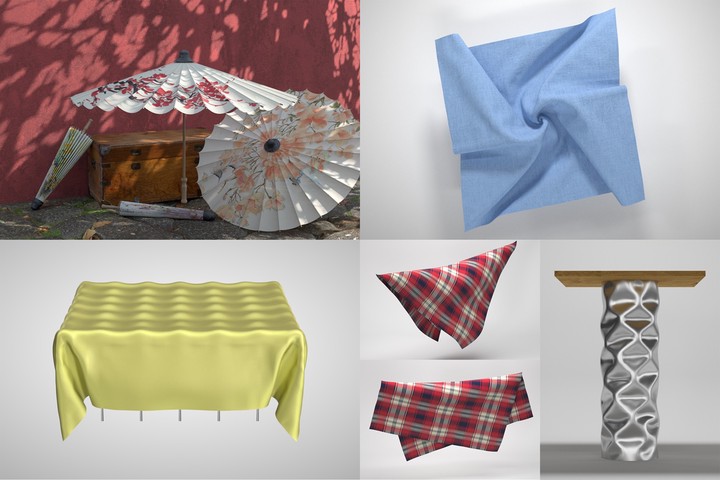
Abstract
In this study, we present the bicubic Hermite element method (BHEM), a new computational framework devised for the elastodynamic simulation of thin-shell structures. The BHEM is constructed based on quadrilateral Hermite patches, which serve as a unified representation for shell geometry, simulation, collision avoidance, as well as rendering. Compared with the commonly utilized linear FEM, the BHEM offers higher-order solution spaces, enabling the capture of more intricate and smoother geometries while employing significantly fewer finite elements. In comparison to other high-order methods, the BHEM achieves conforming $C^1$ continuity for Kirchhoff–Love (KL) shells with minimal complexity. Furthermore, by leveraging the subdivision and convex hull properties of Hermite patches, we develop an efficient algorithm for ray-patch intersections, facilitating collision handling in simulations and ray tracing in rendering. This eliminates the need for laborious remodeling of the pre-existing surface as the conventional approaches do. We substantiate our claims with comprehensive experiments, which demonstrate the high accuracy and versatility of the proposed method.